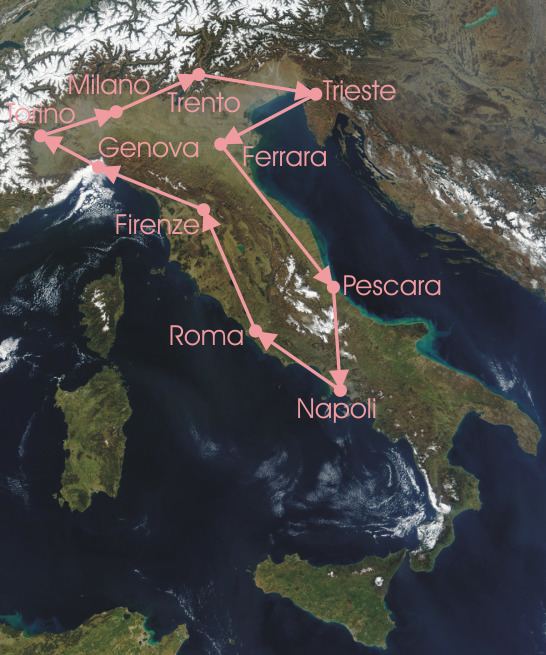Dates 21 May – 8 June Distance 2,984 km (1,854 mi) | Stages 10 Winning time 112h 51' 29" | |
 | ||
Winner Costante Girardengo (ITA) | ||
The 1919 Giro d'Italia was the 7th edition of the Giro d'Italia, a cycling race organized and sponsored by the newspaper La Gazzetta dello Sport. The race began on 21 May in Milan with a stage that stretched 302.8 km (188 mi) to Trento, finishing back in Milan on 8 June after a 277 km (172 mi) stage and a total distance covered of 2,984 km (1,854 mi). The race was won by the Italian rider Costante Girardengo of the Stucchi team. Second and third respectively were Italian Gaetano Belloni and Belgian Marcel Buysse.
Contents
Of 66 riders starting the race, only 15 completed it. The Giro (the first one after the Great War) had the first to stages arriving in the "unredeemed" cities of Trento and Trieste, and was literally dominated by Girardengo, who won seven stages. The '"eternal second" Gaetano Belloni won his first stage in the Giro.
This edition of the race was also characterised by the first stage victory by a Swiss rider and by the first non-Italian cyclist on the final podium: the Belgian Marcel Buysse.
Participants
Of the 63 riders that began the Giro d'Italia on 21 May, fifteen of them made it to the finish in Milan on 8 June. Riders were allowed to ride on their own or as a member of a team. There were four teams that competed in the race: Bianchi Pirelli, Legnano-Pirelli, Peugeot-Tedeschi, and Stucchi-Dunlop.
The peloton was almost completely composed of Italians. The field featured two former Giro d'Italia champions in the three-time winner Carlo Galetti and Eberardo Pavesi who was a member of the 1912 Atala winning team. Other notable Italian riders that started the race included Costante Girardengo, Angelo Gremo, Ezio Corlaita, and Giuseppe Santhià.
General classification
There were fifteen cyclists who had completed all ten stages. For these cyclists, the times they had needed in each stage was added up for the general classification. The cyclist with the least accumulated time was the winner.
Points classification
There was a points based classification for the race.
